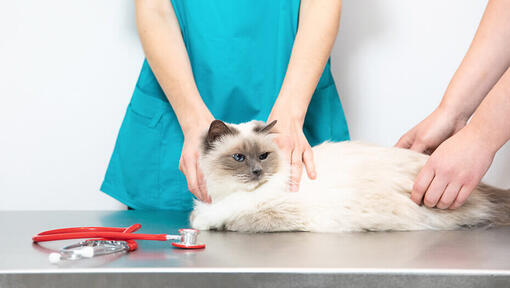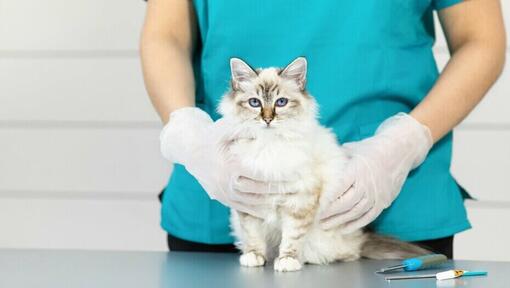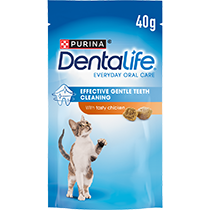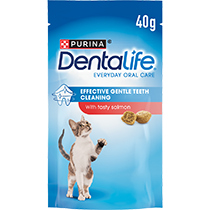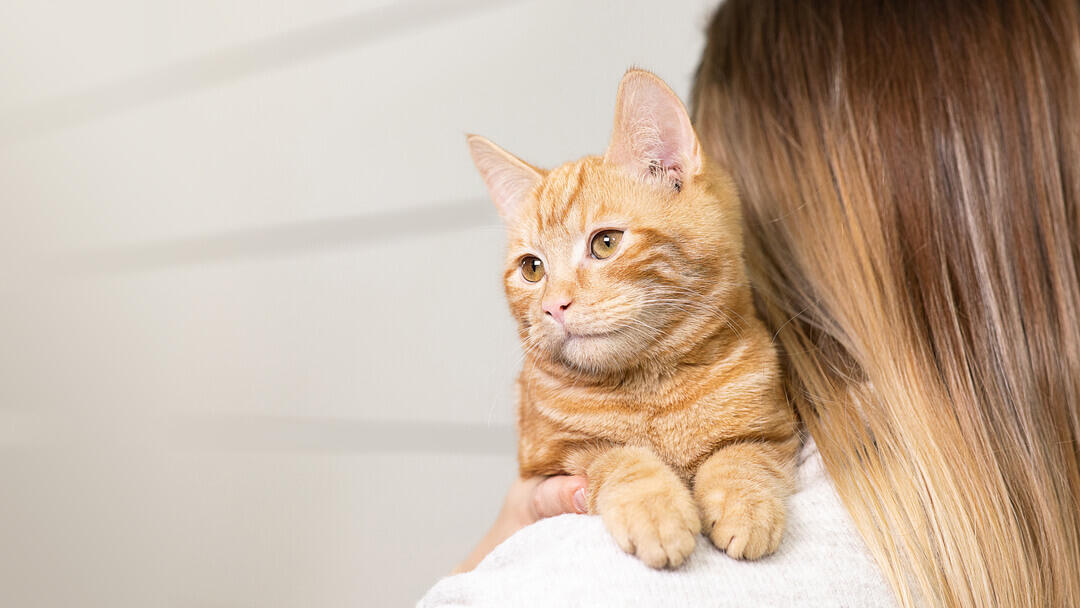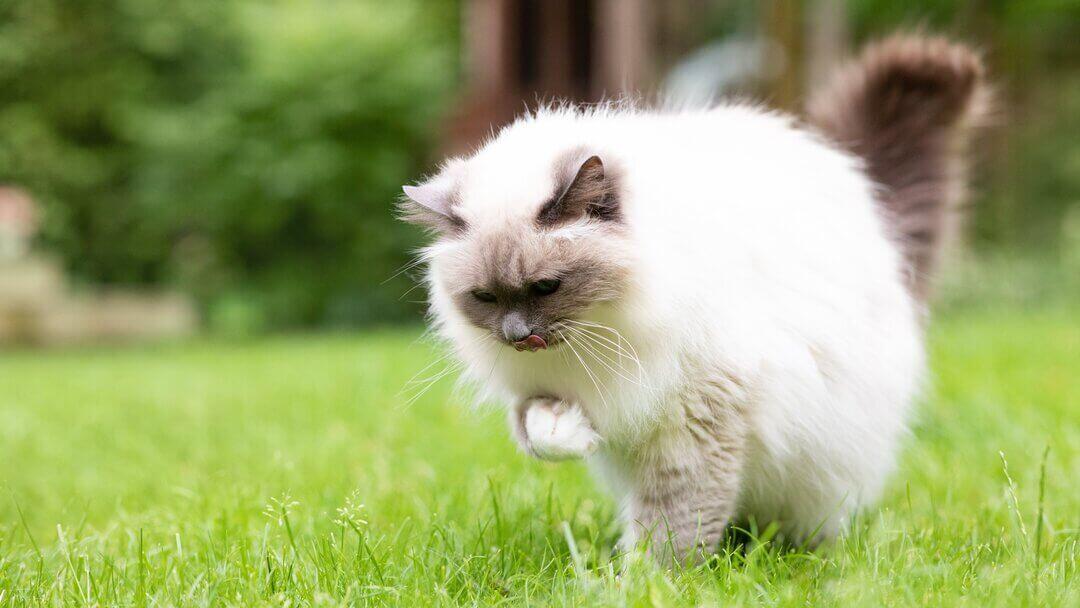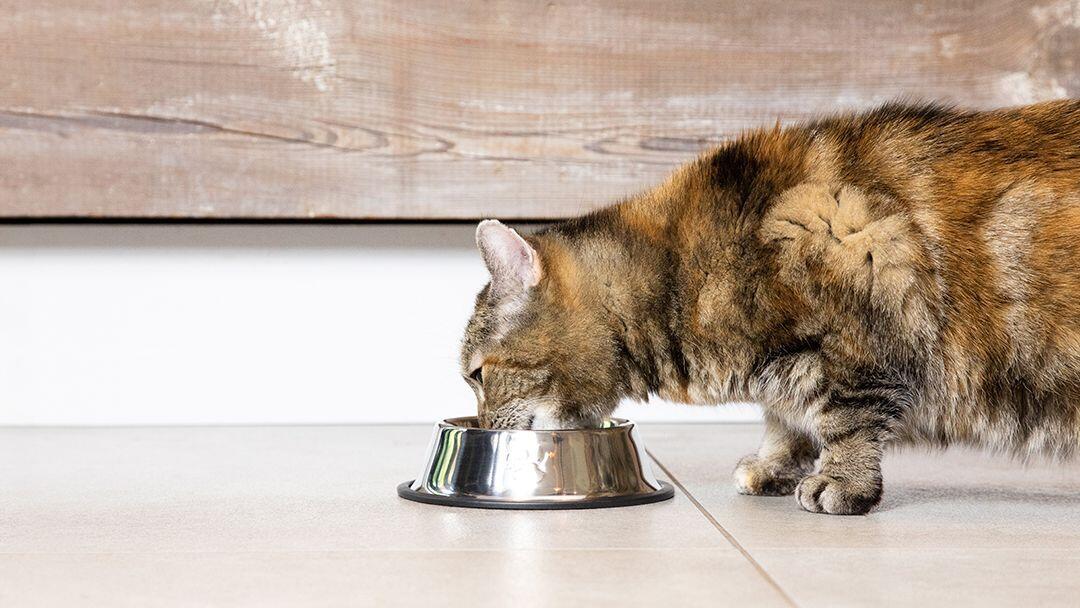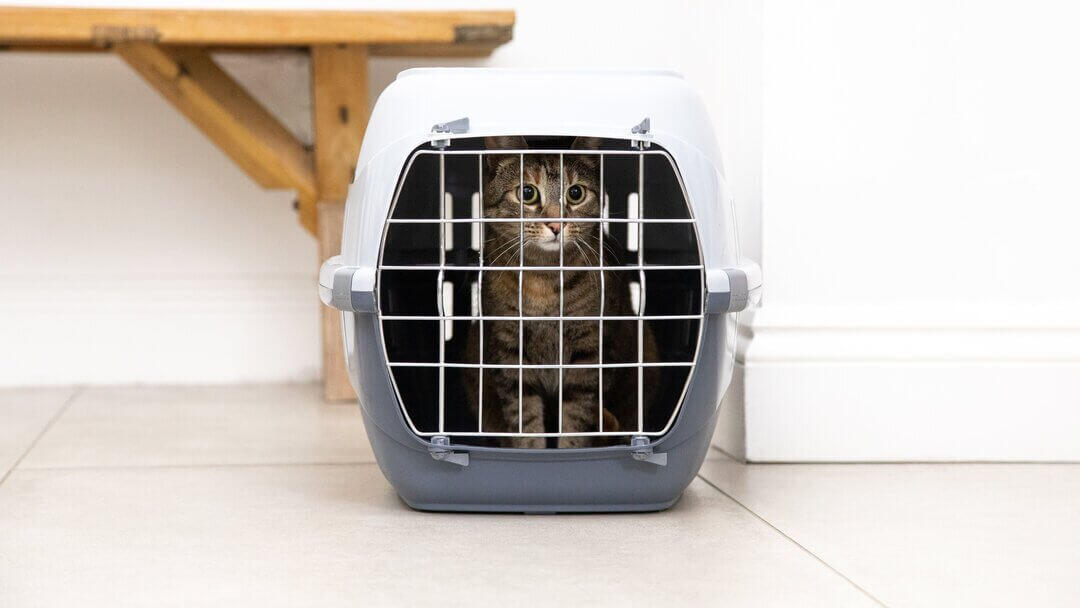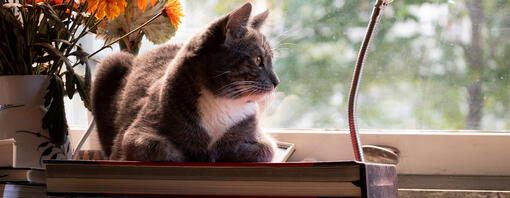
Hernias in cats are quite uncommon but they can still occur, and if they're caught early enough they generally aren't serious. Keep reading to discover everything you need to know about hernias in cats and what you should do if you think your kitty has one.
Hernias in cats are quite uncommon but they can still occur, usually either as a result of trauma or most often they’re congenital (meaning they’re born with it). A hernia usually comes about as a result of a muscle defect or damage which allows internal organs and tissue to pass through. There are three different types, categorised by the location of the hernia itself.
When caught early on, usually cat hernias aren’t serious, however they may become fatal if they’re left untreated. Keep reading to find out about the different symptoms, types, causes, diagnosis and how cat hernias are most commonly treated.
Symptoms of hernias in cats:
- A squishy protrusion on your cat’s body,
- Sickness and vomiting,
- Lack of appetite,
- Blood in the urine,
- Lethargy,
- Depression.
Types of cat hernias
There are three common hernias that occur in cats and kittens, and they are categorised by the part of the body in which they appear. They can range from complicated – which generally means that surgery will be required, to uncomplicated – most commonly these don’t require any surgery and can simply be pushed back into place.
Keep reading to find out more about the different types of cat hernias and how they occur.
1. Inguinal hernia
This type appears in the groin when the intestines are able to push through the inguinal canal. Generally, this is the most uncomplicated type and in many cases will not result in surgery as most often it can simply be pushed back in.
In some more severe cases the intestines may become trapped in the muscle wall, which can be life-threatening as blood flow is cut off to the tissue, resulting in tissue death. This is typically one of the more uncommon types of cat hernias and is usually found in pregnant females.
2. Umbilical hernia
Umbilical hernias are located near the belly button and appear as a squishy protrusion or bulge, which is due to a hole in the muscle wall that allows internal organs to pass through.
They’re generally only seen in kittens because they occur as a result of the umbilical ring not closing properly after birth.
This type of kitten hernia will likely close without treatment before they reach three or four months of age, and is most clearly seen when they’re standing or meowing.
3. Hiatal hernia
A hiatal hernia appears in the diaphragm and it allows the stomach and other organs to slip through the hole and enter the chest cavity. They can be the result of genetics but are usually caused by an injury.
This type of cat hernia is one of the rarest, and when they’re caused by a birth defect they may sometimes come and go which is known as a sliding hernia.
Common causes
- A weak muscle wall,
- Injury or trauma,
- Straining from constipation,
- Pregnancy,
- Birth defects,
- Excessive bloating.
Diagnosis of a cat hernia
If you suspect that your cat has a hernia you should take them to the vets as soon as possible for diagnosis. Your vet will be able to perform a thorough examination and will check the size of your cat’s hernia and whether it’s soft or hard.
If it’s swollen and hard it could be a sign of something more serious such as a strangulated hernia, which happens when part of the tissue becomes trapped and cuts off the blood supply, thus killing the tissue. If this is the case then your cat will require surgery as soon as possible to correct it. In some cases an X-ray may be required to confirm the diagnosis.
Treatment
If your cat or kitten’s hernia is uncomplicated, in most cases surgery won’t be needed as it can just be pushed back in. If it’s more serious or if your cat’s internal organs have managed to get tangled up, then surgery will be needed to push them back through the muscle wall. Once the organs have been returned to their normal position your vet will stitch the muscles together. They may also attach medical mesh to strengthen the weak muscles and to prevent the hernia from reoccurring.
Due to the fact that hernias most commonly appear in kittens or adolescent cats, vets will often correct it at the same time your cat goes in for neutering or spaying in order to reduce the amount of surgeries.
The good news is that when treated early, cat hernias tend to have very few complications and are very unlikely to reoccur. If you have a cat with a hernia, it’s advised not to breed from them in order to prevent future occurrences, as it’s likely that they’ll carry it on to their kittens.



